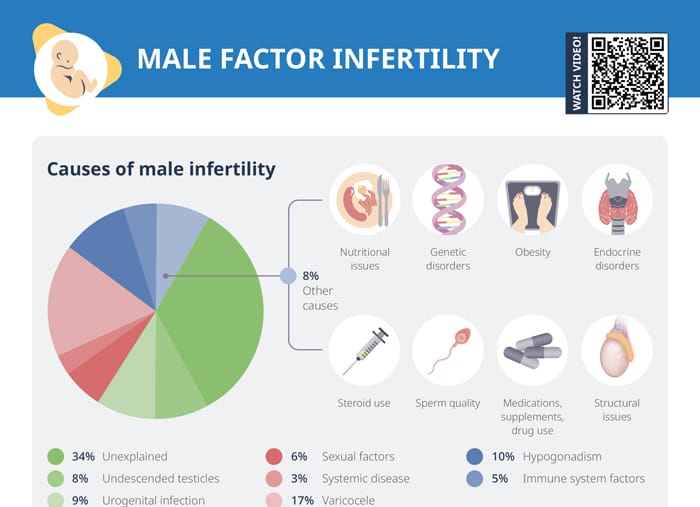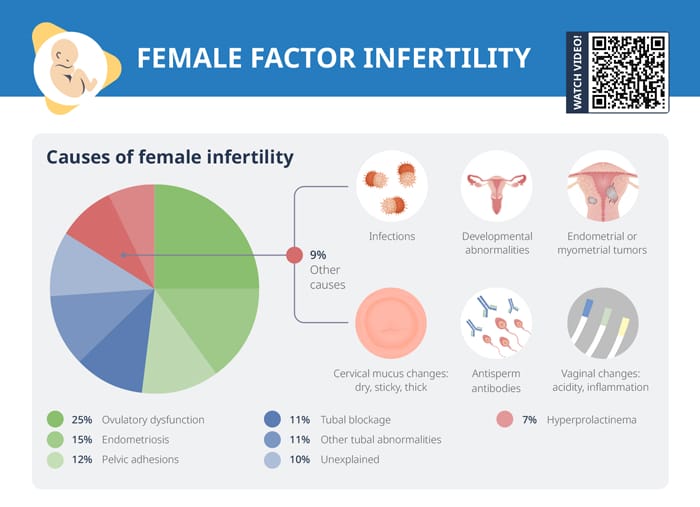What causes infertility in women?
The causes of female infertility are:
- Ovulatory dysfunction (25%)
- Endometriosis (15%)
- Pelvic adhesions (12%)
- Tubal blockage and other tubal abnormalities (11% each)
- Unexplained cases (10%)
- Hyperprolactinemia (7%)
- Other causes (9%):
- Infections
- Developmental abnormalities
- Endometrial or myometrial tumors
- Cervical mucus changes (dry, sticky, thick)
- Antisperm antibodies
- Vaginal changes (acidity, inflammation)
Related videos
Signs of infertility in women
Diagnosis of infertility is based on age and duration of inability to conceive.
For clients below 35 years old, infertility is defined as the inability to conceive after 12 months of unprotected intercourse. For clients over 35 years old, it is the inability to conceive after 6 months of unprotected intercourse.
Types of infertility
Primary infertility is the inability to conceive or difficulty with conceiving in one who has never been pregnant. Secondary infertility is the inability to achieve or difficulty with achieving a pregnancy after having had a successful pregnancy.
How to assess female clients presenting with infertility
History and physical examination
- Medical history (including GYN and OB), sexual development, severe systemic illness or trauma, infections, surgical procedures, drugs and environmental toxins, sexual history, duration of infertility
- Complete physical exam including pelvic exam; assess for obesity, endocrine disorders, general health
Ultrasound of pelvis
Examine the pelvis via ultrasound to rule out structural issues.
Endocrine testing
Endocrine testing assesses estrogen, progesterone, LH, FSH, TSH,
and additional labs as indicated.
Hysterosalpingogram
Patency of tubes should be assessed to rule out tubal blockage or other abnormalities.
Postcoital test
A postcoital test can evaluate if sperm are alive after being exposed to the vaginal environment.
Hysteroscopy or laparoscopy
Structural issues should be ruled out.
How to support female clients experiencing infertility
- Provide clear information about potential causes and stress the importance of medical evaluation by specialists
- Acknowledge the emotional impact of infertility and offer empathetic listening and validation
- Advise on lifestyle choices that may enhance fertility and inform on fertility treatments
- Refer to support services like counseling or support groups
- Encourage partner support
- Guide in decision-making by educating about the choices and implications of different treatments (financial, physical, emotional aspects)

